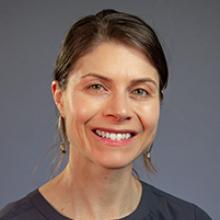Summer STEM—Engaging Youth, Building Identity, Narrowing Gaps
Picture this.
It’s July, and four 12 year-olds in Providence, Rhode Island are huddled around the solar-powered go-kart they designed and built from scratch over the past four weeks. They’re putting on the finishing touches before one teammate will race it against two other teams. As a class, they wrote to the city police department asking to close off a nearby road that afternoon for the race. Family and friends line the street, ready to cheer on their favorite cars.
Meanwhile, in Oakland, California, a group of middle schoolers are taking apart a hair dryer. Once the hair dryer is in pieces, they examine the fan, motor, heating coils, wires, switches, and brackets. Then they’ll make a drawing of the parts and a plan for reassembly—a reverse engineering project designed to promote curiosity about how things work.
And in Boston Harbor a group of middle school youth have travelled by boat out to Thompson Island with Outward Bound. They are gathering samples of plants and insects, writing about and drawing them in their field journals, and bringing them back to the activity leader for identification.
This is summer STEM—hands-on summer programs that teach science, technology, engineering, and math in ways that engage young people and fight the summer learning loss that especially affects the nation’s most vulnerable children and youth.
These programs address a real need. Employers say STEM jobs are going unfilled because students are graduating from high school without the requisite skills. And in college, too few entering freshmen see themselves as scientists, mathematicians, technical experts, and engineers. Many youth, especially girls and other underrepresented groups, see STEM as something other people do, not something they can pursue.
Summer STEM programs hold the promise of closing those gaps by engaging more young people in these fields and helping them create a “STEM identity.” Summer STEM teaches key academic skills, builds confidence, makes STEM learning fun and relevant through hands-on activities, and fosters such critical social and emotional skills as persistence, teamwork, and the application of knowledge.
And summer STEM doesn’t feel like school.
Summer STEM feels like wind and salt and spray while learning how to sail, checking wind velocity, measuring the angle of a sail, and calculating how water currents affects the boat’s speed.
It tastes like fresh tomatoes, peppers, and cilantro from the community garden diced and measured to make homemade salsa.
It looks like designing a new playground structure for the local park and working with an engineering firm to develop and install it. Summer STEM programs make STEM relevant, important, and fun.
But access for many young people is a problem. Often, summer STEM is limited to museums or other sites with hefty entrance fees. Or summer camps unreachable by public transportation. Or at universities that can be intimidating to those with little higher education experience.
Increasingly, partnerships across the country are beginning to address these barriers by working together to provide high quality, free programs right in the neighborhoods where young people live and go to school. Two examples:
CompuGirls is an after-school and summer technology program for adolescent girls of color from under-resourced school districts. Its culturally responsive multimedia activities encourage computational thinking, and its focus is on enhancing girls’ technical, social, and analytic skills in a fun learning environment. The program teaches girls how to design and develop digital media, digital games, and virtual worlds, not just consume digital products.
The Providence [Rhode Island] After School Alliance coordinates the AfterZone Summer Scholars for middle school youth in partnership with the Providence Public School District. Each summer, hundreds of sixth through eighth graders are co-taught by a certified school district teacher, an educator from a STEM-focused community based organization, and a youth development worker. These young people spend half their time at neighborhood parks and on the shore learning one or more STEM disciplines through hands-on, inquiry-based activities. They bring that learning back to the classroom to apply what they have learned.
The keys to Summer STEM success? AIR researchers are studying student interest and engagement at two Summer STEM learning programs. While other elements of success may come to light, we have already learned that young people become interested in STEM and understand its importance when four things happen: they enjoy the activity, they concentrate and work hard, they feel they are learning something, and they feel in control of what they are doing.
Courtney Tanenbaum is a Principal Researcher and the Practice Area Director for STEM at AIR specializing in broadening participation of historically underrepresented groups in STEM education and career pathways.
